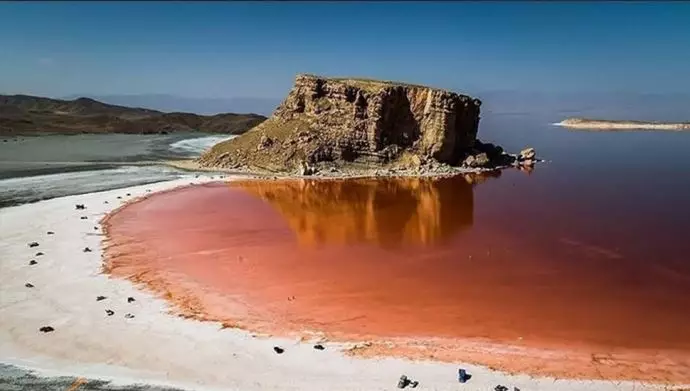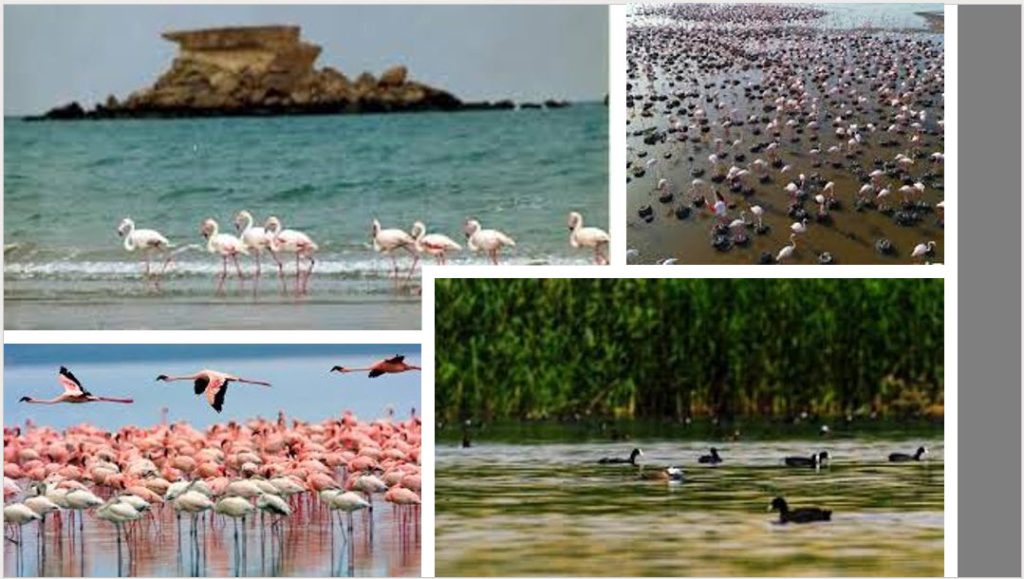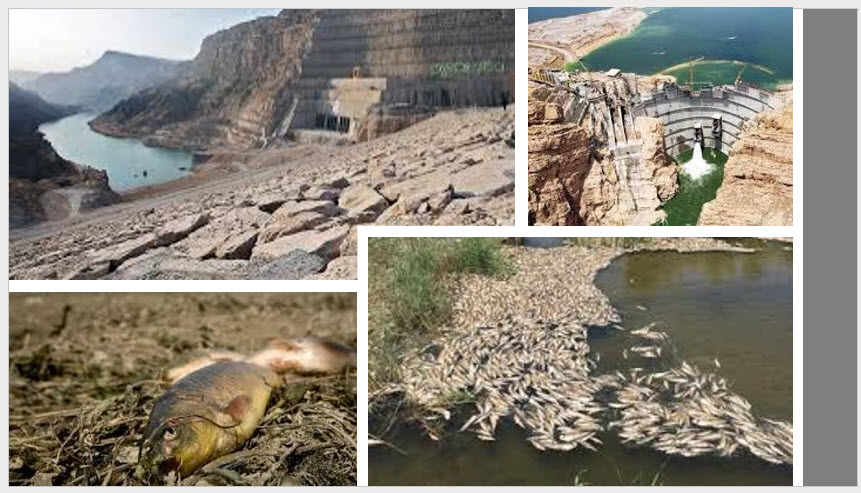
Long considered to be among the largest saltwater lakes in the world and one of the most hypersaline lakes, Lake Urmia is now a sad shadow of what it once was. It has been renamed “Urmia Desert.”
Global warming and climate change are both serious issues that have a negative impact on human life. While many governments address the environmental crises, the theocracy in power in Iran is hastening them. Second-largest salt lake in the world, Lake Urmia in Iran, is now just a few steps away from drying up.Almost 90 miles long and 34 miles wide at its widest point, Lake Urmia and its watershed are vital to the survival of millions of people as well as 226 different bird and animal species. This once-large lake, which used to be a popular vacation spot in Iran’s far northwest, has now been reduced to long stretches of sun-baked solid mud.
A stopover for migratory birds like flamingos, pelicans, storks, and ducks, Urmia Lake is home to more than a hundred small rocky islands. It has been designated a protected area by UNESCO.
In the recent years, officials disregarded calls from numerous experts to address the Lake’s eroding water levels. The lives of millions of Iranians are in danger as the flat, salty areas of Lake Urmia expand once they are dried out.
Significant soil and water salinization will occur, along with significant salt and dust storms and ecosystem changes.Indeed, this tragedy has a major impact from climate change and global warming. But the regime’s improper irrigation methods and heavy anthropogenic pressure are what have made this issue worse.

The Lake Urmia Basin (LUB), with a size of 51,876 km2, is home to industrial and agricultural activities, according to the Nature website. LUB is one of Iran’s most important regions for food production and animal husbandry due to the lake’s surrounding expanse of fertile plains and farmland.
Lake Urmia has been drying since the late 1990s, when the Iranian regime’s Revolutionary Guard (IRGC) and its front companies began their destructive projects. Climate change and global warming have only a 5% contribution to the drying process.
The IRGC’s construction of unscientific dams and the drilling of countless wells throughout the basin were additional factors that significantly contributed to the lake’s drying process. 8,800 wells are said to surround Lake Urmia, according to the government-run Khabar Online in September 2015.
“Wells are among the important factors that have not spared the aquifers from human intervention. There are now 760,000 wells in existence. The amount of water withdrawn from these wells is more than 46 billion cubic meters, according to Khabar online.

First, the regime divided Urmia Lake and severely harmed its water cycle by building a highway under the pretense of uniting the two provinces of East and West Azerbaijan.
“Until 2012, more than 200 dams on the rivers of the lake’s catchment area were ready for operation, or at the end of the design stages,” the state-run Hamshahri daily reported in September 2014.
Given that the IRGC’s Khatam HQ receives the lucrative projects and receives ongoing funding to maintain these dams, building dams is one of the macroeconomic projects that produces stable wealth. Furthermore, the IRGC uses water in other industries in which it has a monopoly, such as steel and petrochemicals.

The sad fate of Lake Urmia is a small piece of a larger tragedy in Iran under the mullahs’ regime: a wealthy nation that has been drained of its resources by a ruling theocracy that places preserving its ominous rule above the welfare of the populace.
MEK Iran (follow us on Twitter and Facebook), Maryam Rajavi’s on her site, Twitter & Facebook, NCRI (Twitter & Facebook), and People’s Mojahedin Organization of Iran – MEK IRAN – YouTub

